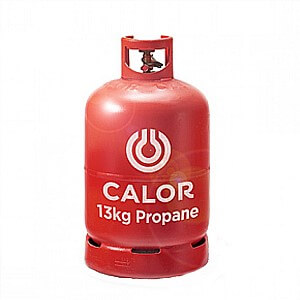Propane COSHH Assessment Form

A three-page COSHH Assessment Form, with some example text reading:
Spillage and environmental:
They are not regarded as dangerous for the environment. However, contamination of the aquatic and terrestrial environments should be avoided.
Mobility: Store in a cool, well-ventilated area. Keep the container tightly closed. Keep away from sources of ignition. Prevent the build-up of electrostatic charge in the immediate vicinity. Ensure lighting and electrical equipment are not a source of ignition.
Accidental release: Extinguish all ignition sources. Avoid sparks, flames, heat and smoking. Ventilate. Runoff or release to sewer, waterway or ground is forbidden. Absorb it with liquid-binding material (sand, diatomite, acid binders, universal binders, sawdust) and place it in containers. Containers must then be appropriately labelled with the correct contents and hazard symbols.
Propane, with the chemical formula C3H8, is a colourless, odourless gas that is highly flammable and serves as a significant byproduct of both natural gas processing and crude oil refining. As a member of the Liquefied Petroleum Gas (LPG) family, propane can be easily converted into a liquid through the application of pressure, which makes it highly convenient for storage and transport in cylinders or tanks.
The molecular structure of propane consists of three carbon atoms and eight hydrogen atoms, resulting in a compact and efficient energy source. Under standard temperature and pressure conditions, propane exists in its gaseous state, but it can be liquefied with relatively low pressure, allowing for efficient storage and transportation over long distances.
As a highly flammable substance, propane has a notable ignition temperature of approximately 470°c (878°f), which is crucial information for handling and safety protocols. While propane is naturally odourless, a distinct odourant (commonly ethanethiol) is intentionally added to aid in leak detection, as this odour can serve as an early warning for potentially hazardous situations.
Although propane is classified as non-toxic, it is important to note that exposure to high concentrations can lead to suffocation due to the displacement of oxygen in the air. Propane is typically stored in various forms, including high-pressure cylinders, bulk tanks, or even underground caverns, depending on the intended use.
This versatile gas is widely employed for a range of applications, including residential heating, cooking, water heating, and as fuel for vehicles. Additionally, propane plays a substantial role in industrial processes, contributing to various manufacturing operations and energy solutions. Overall, propane's unique properties and extensive applications make it a valuable energy source in both residential and commercial settings.
This document is:
- Recognised by local authorities
- Recognised by principal contractors
- Suitable for CDM sites
- Approved by H&S managers
If you want others to have confidence in your company, download and buy the proper documents today.
As with all our documents, our risk assessments are in Word™ format, available for instant download and use, and only need to be bought once.
Once you buy and download this document, it’s yours for life to use repeatedly.
Why not browse the HSEDocs catalogue of method statements, risk assessments, COSHH assessments, or industry-specific packages?
And for safety training relevant to your job, visit our online training courses.
GET THIS DOCUMENT
£8.99+VAT
- Available in Word™
- Fully customisable
- Add your Company Logo
- UK & EU Compliant

 CART
CART 